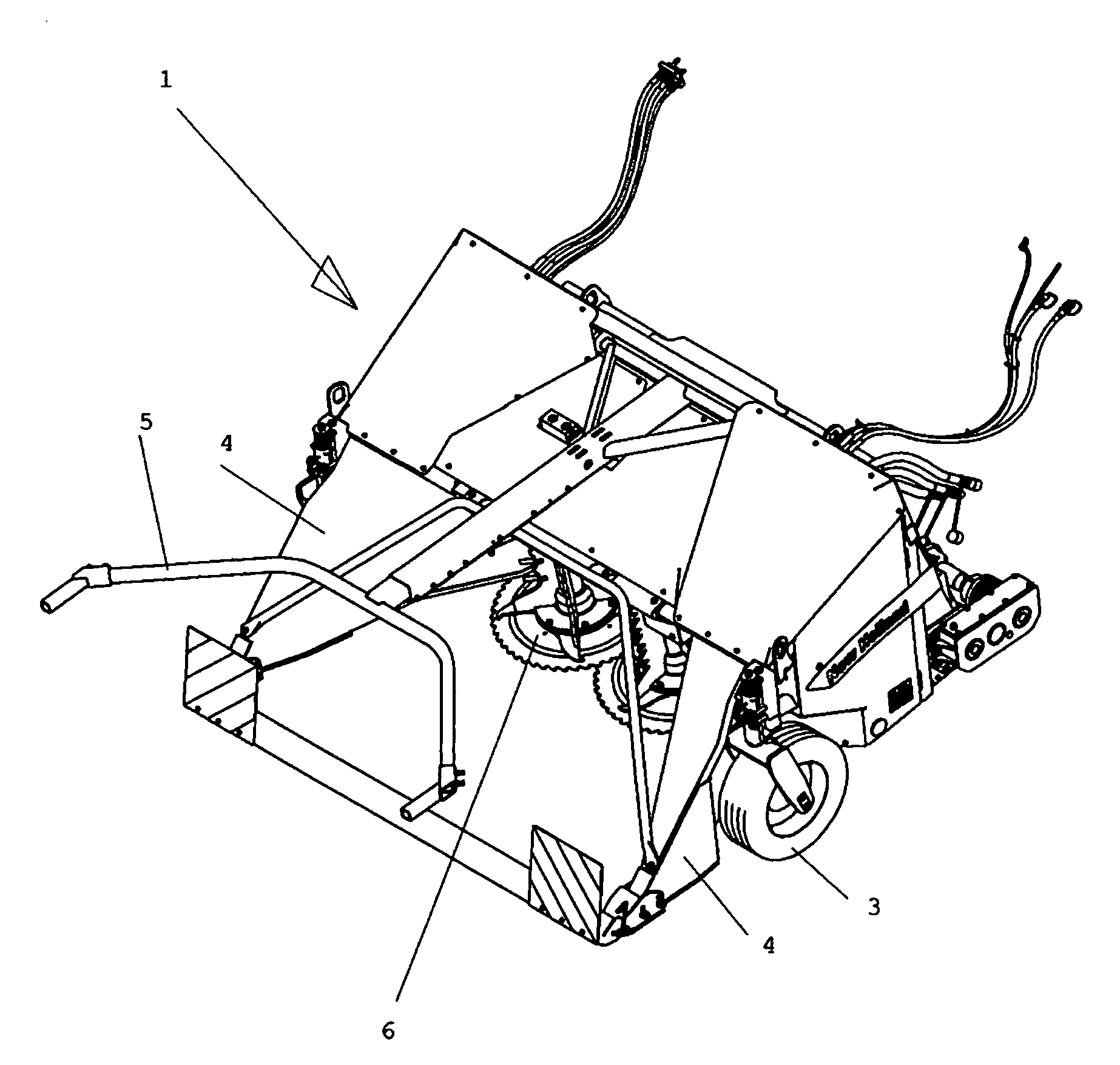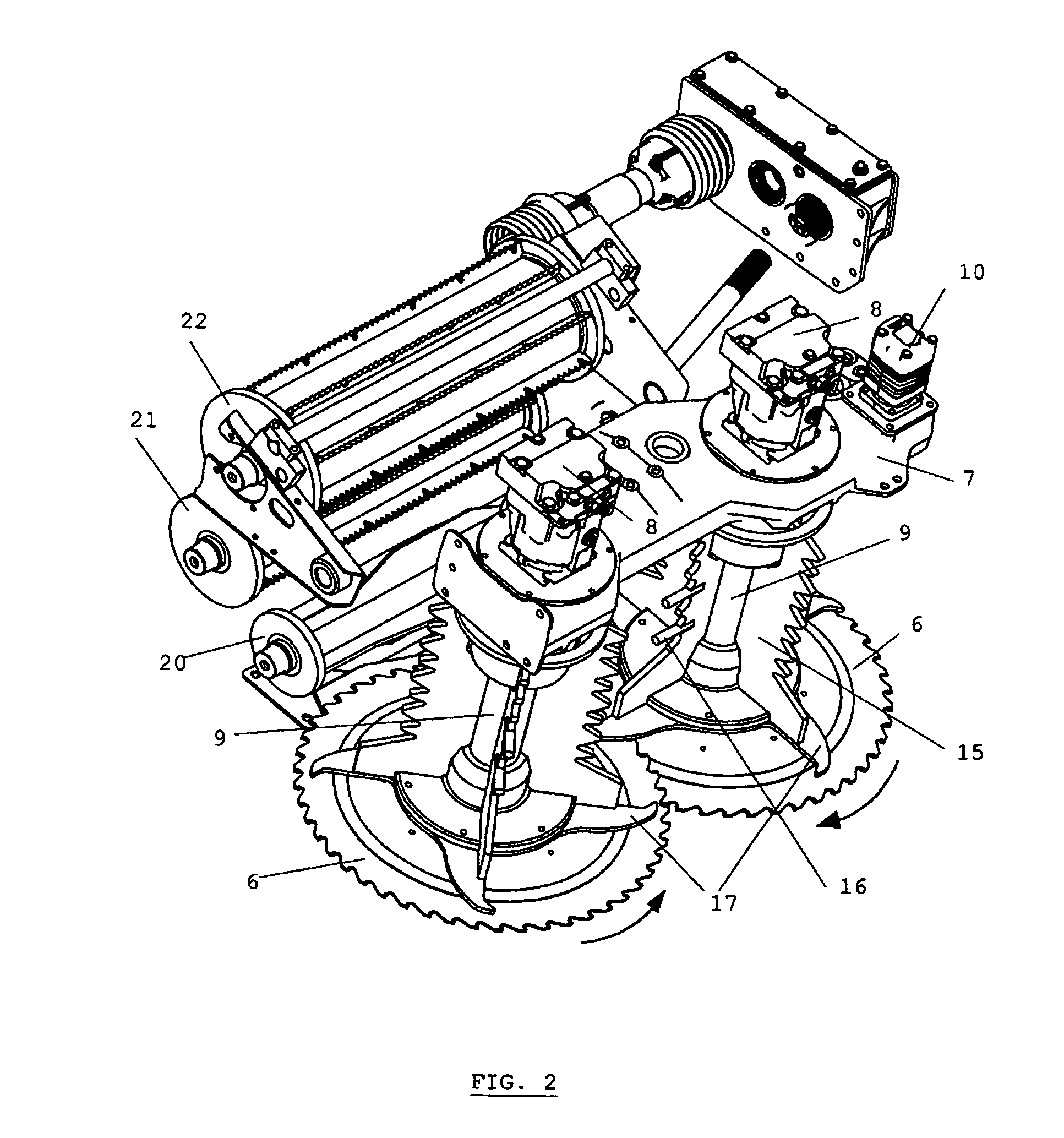Header for a forage harvester
a forage harvester and head technology, applied in the field of forage harvesters, can solve the problems of ‘double cutting’ of stems and increased risk of blocking, and achieve the effects of reducing free space, increasing the transfer of stems, and increasing the engagement of the base of stems
- Summary
- Abstract
- Description
- Claims
- Application Information
AI Technical Summary
Benefits of technology
Problems solved by technology
Method used
Image
Examples
Embodiment Construction
[0022]A preferred embodiment will now be described in further detail, by way of example only, with reference to the accompanying drawings. The detailed description is not limiting the scope of the invention, which is defined only by the appended claims. In the following description, the terms ‘front’, ‘before’, etc. and ‘back’, ‘rear’, ‘behind’, etc. are consistently used to refer respectively to the front of the header, i.e. the part where the knives are present, and the back of the header, i.e. the side that is connected to the harvester. The terms ‘horizontal’ and ‘vertical’ indicate a general direction and are not limiting in a strict sense.
[0023]FIG. 1 shows a header 1 according to the invention. The header comprises means for attaching the rear section of the header to a feeder unit of a forage harvester of a known type. These attachment means and the means for coupling the header to the power source of the harvester can be manufactured in a suitable way according to known pra...
PUM
 Login to View More
Login to View More Abstract
Description
Claims
Application Information
 Login to View More
Login to View More - R&D
- Intellectual Property
- Life Sciences
- Materials
- Tech Scout
- Unparalleled Data Quality
- Higher Quality Content
- 60% Fewer Hallucinations
Browse by: Latest US Patents, China's latest patents, Technical Efficacy Thesaurus, Application Domain, Technology Topic, Popular Technical Reports.
© 2025 PatSnap. All rights reserved.Legal|Privacy policy|Modern Slavery Act Transparency Statement|Sitemap|About US| Contact US: help@patsnap.com



